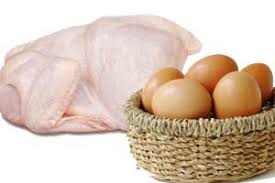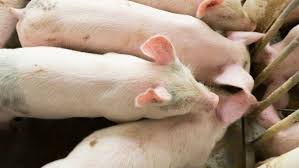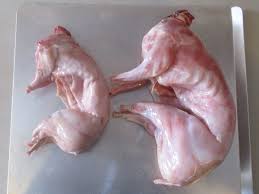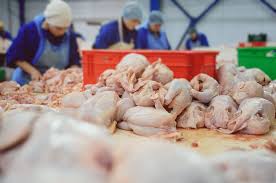Processing involves a series of steps such as slaughtering, skin/fur/feather removal, grinding, seasoning, heat treatment, smoking, salting, and more. Marketing encompasses activities associated with the transfer of farm animals and their products from producers to consumers. Storage refers to the preservation of animal products to maintain quality and prevent spoilage.
Processing, Marketing, and Storage of Poultry Products
Traditionally, chickens are sold alive. However, in recent years, commercial farms have introduced dressed and frozen chicken, especially popular in hotels, restaurants, and among educated customers.
The growing preference for fast food has also influenced the dressed chicken market. Unfortunately, there is still a lack of proper technology for producing hygienic poultry products and by-products.
The quality of chicken meat can deteriorate due to improper storage, resulting in changes in color, flavor, texture, and nutrient content. Proper pre-chilling of dressed carcasses is crucial, with freezing temperatures playing a significant role in retaining carcass quality.
Research suggests that pre-chilled carcasses with skin can be stored for 18-20 days at -2±0.5°C, six months at -18°C, and one year at -30°C in liquid nitrogen without affecting flavor, aroma, or tenderness.
Most consumers prefer to buy live chickens and have them slaughtered and processed either at home or in local markets. The demand for dressed chicken is growing globally due to changes in lifestyle, food habits, and manpower shortages. However, in Nigeria, the quality control of dressed chicken remains underdeveloped.
Challenges in Poultry Marketing and Storage
Live poultry marketing presents several challenges, such as environmental hazards, disease spread, increased production costs due to transportation, and handling losses. Without proper processing facilities, farmers often receive lower prices for their products.
Developing a systematic poultry product processing, storage, and marketing system is essential for stabilizing market prices and ensuring a steady supply of live and dressed birds.
Small and large broiler farms partially process their stock and distribute directly to restaurants, hotels, or consumers. By-products like viscera, blood, feathers, and shanks are used as fish feed, while others are wasted and pollute the environment. Poultry droppings, rich in uric acid, can be used as fertilizer after conversion to urea.
Problems with Processed Poultry Products
Some commercial farms process broilers, but issues like improper sanitary measures in processing plants lead to spoilage and unpleasant odors. The lack of scientific knowledge, modern equipment, and proper refrigeration facilities affects the quality of processed meat.
Egg processing and grading systems are also underdeveloped, leading to breakage and spoilage during transportation. Grading and packing eggs are essential to prevent damage and cater to consumer preferences.
Read Also: Is Providing Shades on a concrete fish tank necessary? Find out
Marketing Issues in Poultry Meat and Eggs

Poultry marketing in many regions remains traditional and inefficient. Producers often struggle to get fair prices due to a lack of government support, distance from consumers, small production outputs, and consumer mistrust of processed birds.
Live chicken marketing is popular in rural areas due to trust in slaughtering methods, despite the growing demand for broiler meat in urban settings. There is also a need for improved marketing channels to benefit both producers and consumers.
Processing, Marketing, and Storage of Swine Products

Transporting pigs to the slaughterhouse can result in stress, death in transit, or reduced carcass quality due to improper handling, heat stress, and mixing with unfamiliar pigs.
To minimize stress, pigs should be handled gently, sprayed with cold water, and transported during cooler parts of the day. Stunning pigs before slaughter is essential for animal welfare, while proper scalding, de-hairing, and evisceration ensure meat hygiene.
Swine marketing options include private sales, public auctions, direct sales to butchers, and contract sales. Each method has its advantages and challenges, with fluctuations in prices often affecting profitability. The ability to market pigs effectively is crucial to the success of commercial pig production.
Read Also: Meaning of Recirculating Aquaculture System (RAS) in Fish Farming
Processing, Marketing, and Storage of Rabbit Products

Rabbits reach maturity for slaughter at around 5-6 months, depending on breed, location, and management practices. Culling of older bucks and does with low productivity is common. Rabbits can be processed using stunning or direct killing methods, with fur removal following slaughter. Processed rabbit meat requires proper hygiene to prevent contamination and spoilage.
Challenges in Rabbit Product Marketing
Marketing rabbit products is still developing, with many producers relying on local markets or private sales. To ensure fair prices and better market reach, producers must focus on proper processing, packaging, and distribution.
Do you have any questions, suggestions, or contributions? If so, please feel free to use the comment box below to share your thoughts. We also encourage you to kindly share this information with others who might benefit from it. Since we can’t reach everyone at once, we truly appreciate your help in spreading the word. Thank you so much for your support and for sharing!
Read Also: 14 Health Benefits of Bitter Leaf (Vernonia Amygdalina)






